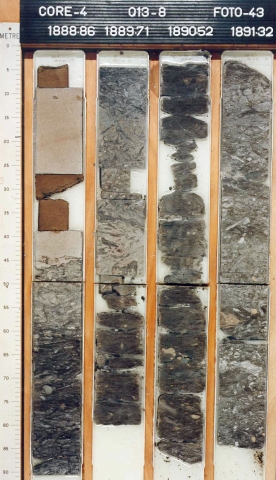Code
SLDNR
Status
Formal (Van Adrichem Boogaert & Kouwe 1993).
Lithological description
Medium- to dark-grey, silty to sandy lignitic claystones with common laminated or contorted bedding, and lignite/coal beds. Locally mollusc shells are present. Siderite spherulites and concretions are common. The member shows a characteristic serrate pattern on wireline logs.
Depositional setting
Lower-coastal-plain to lagoonal.
Definition of lower boundary
Conformably overlies the massive fluvial sands of the Delft Sandstone Member, or rarely flood-plain sand/claystone alternation of the Alblasserdam Member of the Nieuwerkerk Formation, into which it grades towards the south-east.
Definition of upper boundary
Unconformably overlain by the Rijswijk Member of the Vlieland Sandstone Formation.
Thickness indication
Up to 420 m.
Geographical distribution
Regional correlation
UK: Cromer Knoll Group - Humber Group; GER: ?; BEL: -.
Age
late Valanginian - early Hauterivian.
Holostratotype
Well:
Depth (thickness) AH:
2178 - 2224 m (46 m)
Parastratotype
Well:
Depth (thickness) AH:
562 - 674 m (112 m)
Origin of name
Named after the village of Rodenrijs near Rotterdam.
Previous name(s)
None.
Reviewed by (date)
Sander Houben (2017).
References
Van Adrichem Boogaert, H.A. & Kouwe, W.F.P. 1993. Stratigraphic nomenclature of The Netherlands; revision and update by RGD and NOGEPA, Section G, Upper Jurassic and Lower Cretaceous. Mededelingen Rijks Geologische Dienst, 50, 1-80..
Cite as
TNO-GDN ([YEAR]). Rodenrijs Claystone Member. In: Stratigraphic Nomenclature of the Netherlands, TNO – Geological Survey of the Netherlands. Accessed on [DATE] from http://acc.dinoloket.nl/en/stratigraphic-nomenclature/rodenrijs-claystone-member.
